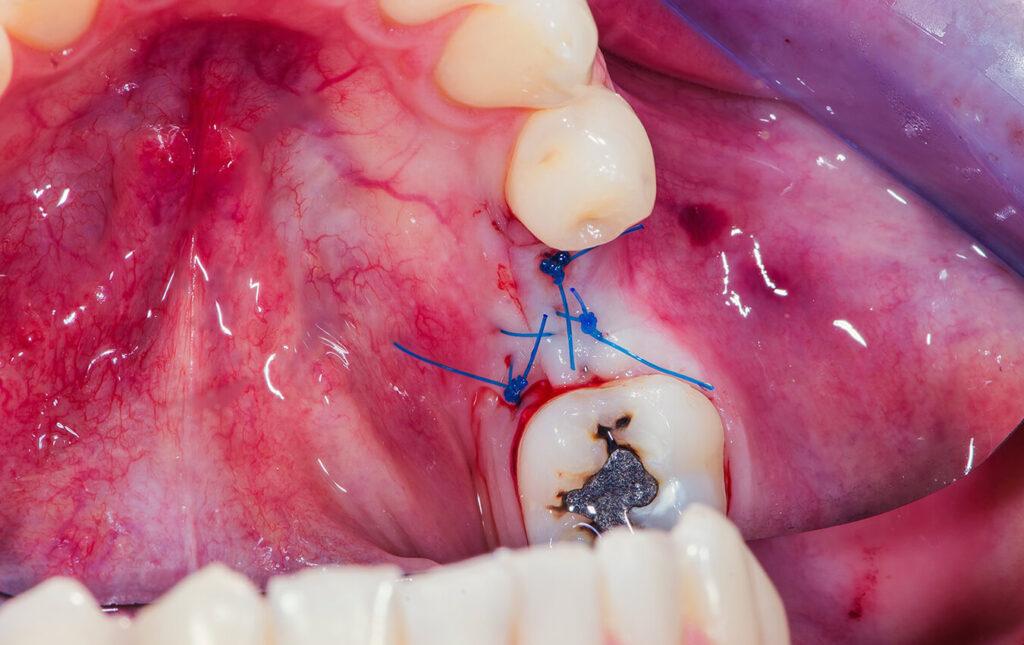
Endodontists recur to microsurgery when a root canal is not sufficient to save the injured teeth. The microsurgical procedures allow endodontic surgery to be performed with smaller osteotomies, shallow bevels, preparation of isthmuses, examination of resected root surfaces, retropreparation in line with root canal, and precise placement of new filling materials. The most usual surgery used on these purposes is the apicoectomy or root-end resection and it is called endodontic microsurgery because it is performed under microscope.
Still, there is a certain difference between apicoectomy and root-end resection: the former refers to removing the apex of the root, while the latter removes the entire root. An apicoectomy is suggested by dentists if an infection develops or persists and a root-canal treatment is not sufficient to stop the disease. Infections can persist or reappear if infected debris remain in off-shooting branches. The endodontic microsurgical procedure removes the root apex together with the associated tissue and stops the infection. Usually, up to 4 mm of the canals from the opening of the tip are cleaned and the infection is stopped and a retrograde filling is placed to seal the root. The entire procedure is meant to prevent the extracting of the infected tooth and it is usually performed only after two or three root-canal treating attempts in advance. Generally, the procedure has 80 to 85% chances to succeed, especially owing to the usage of light and magnification which allow the endodontist to see the area better. Usually, apicoectomies last between 30 to 90 minutes, depending on the location of the tooth and the structure of the root. In this sense, endodontic microsurgery performed on front teeth is generally the shortest; while that on lower molars lasts the longest.
Benefits
- Great chances for the tooth to be healed up to 85%
- Avoid tooth extraction
- The recovering process is considered easier than a root-canal treatment
Who is this procedure for?
- For patients who have root canals re-infected
- If there is a problem near the apex of the root
Who should not consider this procedure?
- Those who are allergic to epinephrine which is used for local anesthetic.
- Those with blood circulation problems.
What happens before the procedure?
Before the procedure, one or more consultations with the dentist are required. The patient will have X-rays taken, he may also be given antimicrobial mouth rinse, anti-inflammatory medication. An epinephrine local anesthetic is also required before proceeding.
What happens during the procedure?
The gum is cut and detached from the tooth so that the root can be accessed. The infected tissue is eliminated as well as the last few millimeters of the root tip. Endodontists apply a dye to have cracks and fractures highlighted in the tooth. If the any crack or fracture is spotted then the apicoectomy will be interrupted and the surgeon will continue with an extraction.
The apicoectomy is completed after 3 millimeters at the tip of the root are shaved off and another 3 or millimeters of the tooth’s canal are cleaned and filled. The cleaning is performed under a microscope using ultrasonic instruments.
What happens after the procedure?
After the procedure, the patient may meet with discomfort or slight swelling during the process of healing. To lessen the discomfort, the doctor usually recommends appropriate pain medication and to ice the affected area. Brushing the area, smoking or eating crunchy food are usually forbidden activities. Of course if the pain and the discomfort still persist, further medical assistance is required. The doctor may also suggest dietary restrictions.

